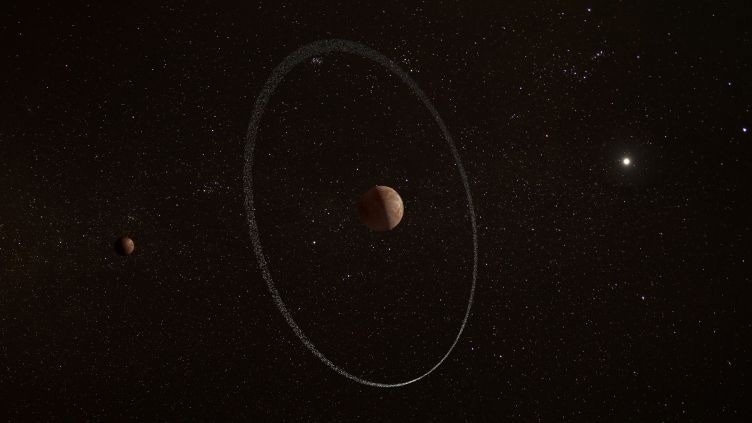A new ring system near a dwarf planet on the edge of the Solar System has been discovered by researchers.

Image Credit: ESA, CC BY-SA 3.0 IGO.
The ring system orbits much farther away than is normal for other ring systems, calling into question current theories of how ring systems are formed.
The ring system is present near a dwarf planet called Quaoar, which is roughly half the size of Pluto and orbits the Sun beyond Neptune.
The breakthrough, reported in the Nature journal, was made by an international group of astronomers with the help of HiPERCAM. It is an extremely sensitive high-speed camera developed by researchers at the University of Sheffield and is mounted on the largest optical telescope in the world. It is the 10.4 m diameter Gran Telescopio Canarias (GTC) on La Palma.
The rings are faint and too small to see at once in an image. The scientists had made their breakthrough by making an occultation, when Quaoar stopped the light from a background star as it orbits the Sun.
The event just went on for less than a minute but was abruptly preceded and tracked by two dips in light, which is symbolic of a ring system near Quaoar.
Ring systems are comparatively rare in the Solar System and also the renowned rings near the giant planets Jupiter, Saturn, Uranus, and Neptune, only two other small planets possess rings named Haumea and Chariklo.
All of the earlier recognized ring systems have the potential to survive as they orbit next to the parent body, so tidal forces help stop the ring material from accreting and developing moons.
The reason the ring system near Quaoar is such an important discovery is that it lies at a distance of over seven planetary radii, which is twice as far out as what was earlier thought to be the maximum radius as per the alleged “Roche limit,” which is known to be the outer limit of where ring systems were thought to be.
For comparison purposes, the main rings next to Saturn lie within three planetary radii. Hence, this breakthrough forced a reconsideration of theories of ring formation.
It was unexpected to discover this new ring system in our Solar System, and it was doubly unexpected to find the rings so far out from Quaoar, challenging our previous notions of how such rings form.
Vik Dhillon, Study Co-Author, Department of Physics and Astronomy, University of Sheffield
Dhillon added, “The use of our high-speed camera -HiPERCAM-was key to this discovery as the event lasted less than one minute and the rings are too small and faint to see in a direct image.”
“Everyone learns about Saturn's magnificent rings when they're a child, so hopefully this new finding will provide further insight into how they came to be,” continued Dhillon.
Journal Reference
Margado, B. E., et al. (2023) A dense ring of the trans-Neptunian object Quaoar outside its Roche limit. Nature. doi.org/10.1038/s41586-022-05629-6.